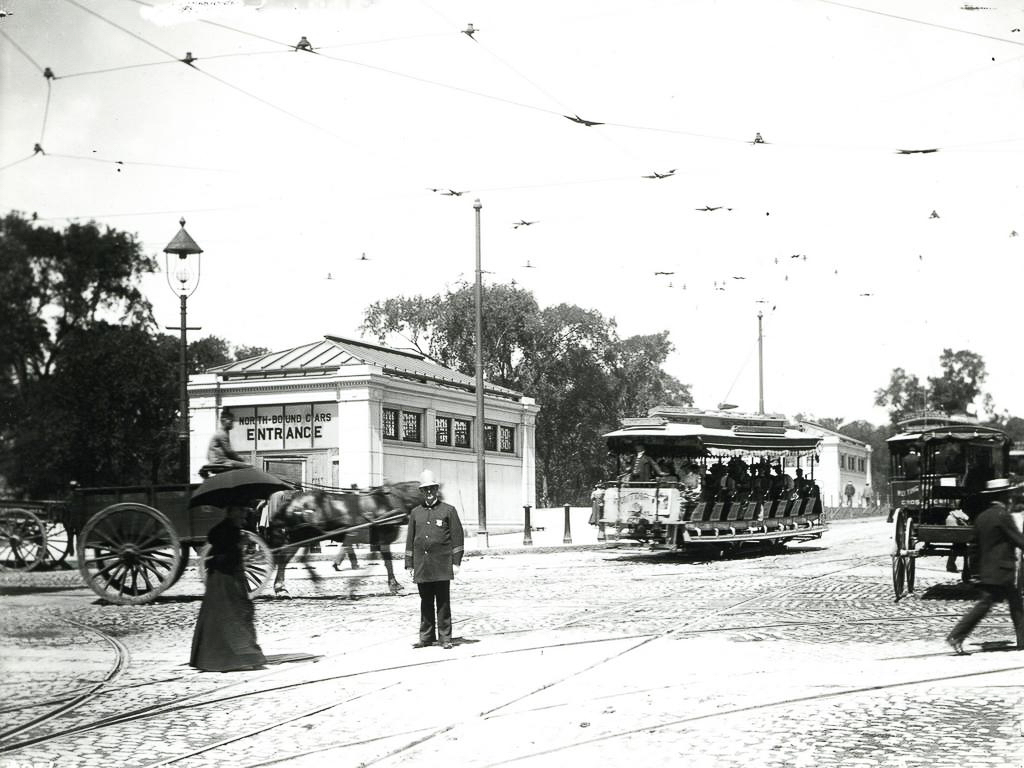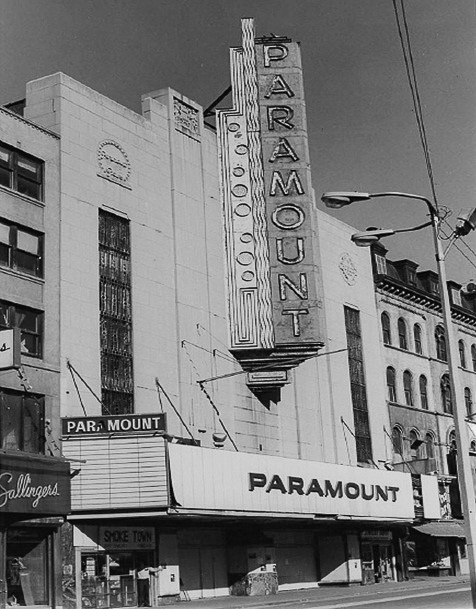
While some may consider Emerson‚Äôs campus quite small, many students will tell you that after some time in the area, many places along Boylston and Tremont streets begin to feel like home. Adjacent to some of the city‚Äôs most historic areas like the Boston Common, Chinatown, and the Theater District, Emerson‚Äôs campus is surrounded by the energy of these vibrant communities every day.¬Ý
However, given the area’s lengthy history, the addition of the college‚Äôs presence in the district is more recent than one might think.¬Ý
When Emerson College was originally founded in 1880 by Charles Wesley Emerson, classes were held in Pemberton Square by Government Center. After two faculty members bought the college from Emerson at the turn of the century, the college‚Äôs campus was relocated to Chickering Hall in Boston‚Äôs Back Bay.¬Ý
The college continued to thrive in the Bay until the 1990s, despite efforts in 1979 by President Allen E. Koenig‚Äîundeterred by newly purchased Commonwealth Avenue buildings‚Äîto move Emerson‚Äôs campus to the town of Lawrence, Mass. The plan to move the college more than 27 miles away from Boston was ultimately abandoned due to financial constraints and community opposition.¬Ý
In 1989, John Zacharis became the 10th president of Emerson College and over the course of two years, worked to restore unity to the campus by purchasing a building at 180 Tremont Street, what Emersonians today call the Ansin Building. This purchase started a transition from Back Bay to the Theater District, and the following administrations continued to make Downtown Emerson‚Äôs new home.¬Ý

The Theater District‚Äôs history can be traced back to the repeal of a Puritan ban on theater in 1792. When play and picture houses began to populate the area of lower Washington and Tremont streets, the area quickly became a hub of entertainment. By 1900, the Boston Theater District was Boston‚Äôs center for opera, theater, and vaudeville performing. As motion pictures became mainstream, movie theaters came onto the scene in the 1920s.¬Ý
It was around this time that a familiar Emerson fixture, the Little Building, was constructed as a mixed-use development facility, with retail, commercial, and office space.¬Ý¬Ý
Named after the original financier John Mason Little, the Little Building was designed by Clarence Blackall and built-in 1917. Originally an office building with a two-story retail arcade, the Little Building was nicknamed “The City Under One Roof” because of its many shops, offices, and stores. It was a pioneering example at the time of a mixed-use development that was connected to the subway and a theater by underground pedestrian tunnels.¬Ý
Emerson College purchased the Little Building in 1995 and converted it into a mixed-use residential and commercial space, which has held different tenants throughout the years, including a bank, a Dunkin‚Äô Donuts, a Baskin-Robbins, the school‚Äôs bookstore.¬Ý
Adding to the growing downtown campus, Emerson College purchased Boston’s historic Paramount Theater in 2005 and the Colonial Theater in 2006.¬Ý

In its heyday in the 1930s, the Paramount Theater was one of the first in Boston to show “talkie” movies. Falling into disrepair by the late ‚Äò60s, Paramount went largely untouched until Emerson College purchased it in 2005.¬Ý
Repairing the theater to its original Art Deco design took five years, and when the completed restoration opened in 2010, the public was impressed by the scope of the renovation‚Äôs history and detail.¬Ý
‚ÄúThere‚Äôs a tremendous amount of craft in this renovation,‚Äù David Dower, the vice president of Emerson‚Äôs Office of the Arts and artistic director of ArtsEmerson, told WCVB Boston.¬Ý
“The Art Deco feel that the theater has now, that’s the decision that was made, to let the building resonate with its past,” Dower added.
One of Emerson College‚Äôs many theaters, the Colonial, was purchased in 2006 and needed little renovation. Built in 1900, the Colonial Theater is the oldest continually operating theater in Boston and has witnessed many historic moments in theater history.¬Ý
In the 1940s, the Colonial Theater was used as a trial ground for some of Broadway’s most promising productions, where shows were perfected before they ran in New York.
In 1943, ‚ÄúAway We Go‚Äù came to the Colonial, which had already premiered in New York, where it was called, ‚Äúa show with ‚Äòno jokes, no legs, and no chance.‚Äô‚Äù The show was brought to the Colonial to be perfected and prepared for another run.¬Ý
Kit Haggard is the director of the Boston Literary District, and is an Emerson alum who researched the theater‚Äôs history during her time at Emerson.¬Ý
She said, ‚ÄúA song for the show, called ‚ÄòOklahoma!‚Äô was written right here in this lobby and it was practiced for the first time on the steps.‚Äù¬Ý
The production’s name was eventually changed to the title of the song and went on to be an enduring hit on Broadway. It was also the first time that Roger and Hammerstein, the famous musical theater company, started working together.¬Ý
While Emerson College‚Äôs role in the Theater District is a new one, the rich history and enduring role of its facilities give the campus an added feeling of tradition and legacy.¬Ý